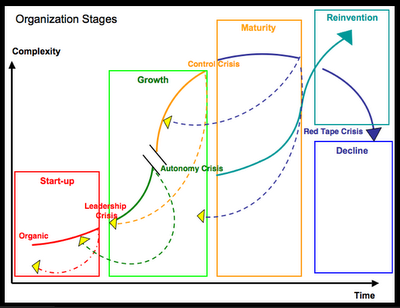Reports from the Knowledge Labs about our recent findings, research topics, and interviews with lifestyle leaders who are creating their own futures.
|
|
| |
How to stimulate your own powers of foresight. Consider the following thought provokers. Ask yourself, in these categories what are the brand new trends and forces? Which are the ones growing in importance? Which current forces are loosing their steam? Which have peaked or are reversing themselves? Which are the "wildcards" about to disrupt us in the future? POLITICAL AND TECHNICAL thought for food: Electronics, Materials, Energy, Fossil, Nuclear, Alternative, Other, Manufacturing (techniques), Agriculture, Machinery and Equipment, Distribution, Transportation (Urban, Mass, Personal, Surface, Sea, Subsurface, Space), Communication (Printed, Spoken, Interactive, Media), Computers (Information, Knowledge, Storage & Retrieval, Design, Network Resources), Post-Cold War, Third World, Conflict (Local, Regional, Global), Arms Limitation, Undeclared Wars, Terrorism, Nuclear Proliferation, Weapons of Mass Destruction, Governments (More/Less Power and Larger or Smaller Scale), Taxes, Isms: Nationalism, Regionalism, Protectionism, Populism, Cartels, Multinational Corporations, Balance of Trade, Third Party Payments, Regulations (OSHA, etc.) Environmental Impact, U.S. Prestige Abroad. SOCIAL AND ECONOMIC Food for thought:
Labor Movements, Unemployment / Employment Cycles, Recession, Employment Patterns, Work Hours / Schedules, Fringe Benefits, Management Approaches, Accounting Policies, Productivity, Energy Costs, Balance of Payments, Inflation, Taxes, Rates of Real Growth, Distribution of Wealth, Capital Availability and Costs, Reliability of Forecasts, Raw Materials, Availability and Costs, Global versus National Economy, Market versus Planned Economies, Generations: Y, X, Boomers, Elderly, Urban vs. Rural Lifestyles, Affluent vs. Poor, Neighborhoods and Communities, Planned or Organic Growth.
Got Knowledge?
|
|
| |
|
|
|
|
The Journal of 2020 Foresight
|
|
| |
|
Wednesday, August 16, 2006

Talented Crisis Management: Leadership, Autonomy, Control, and Red Tape
Chapter Four: The Tribal Territories
By Steve Howard, CKO
The Knowledge Labs
Table of Contents
Chapter One: Basecamp
Chapter Two: The Ridge
Chapter Three: The Outpost
Chapter Four: The Tribal Territories
“So Sun met Earth Brown in John Lee’s bar. Earth was fascinated and captivated by her beauty, the symmetry of her moves. He couldn’t take his eyes off her. While he was watching her, the Devil came up behind him. He saw that Earth was drinking some Alaska water, from the glaciers.”
Neil Young & Crazy Horse “Greendale”
DOUBLE NICKEL RANCH. If you consider the lifespan of an organization that has any sort of history – say over two generations or 40 years -- you can see which talent competencies come in and out of favor. You’ll witness it as it evolves and leaps forward in predictable stages from infancy start-up through growth to maturity and decline and from simple to complex over time.
Journal of 2020 Foresight: Not all organizations even make it that far -- 40 years, right?
Explorer: The infant mortality rate is a decade. To your point, Arie De Geus says 40% of all newly created companies don’t last that long. Regardless of size, the average in Japan and Europe is 12.5 years.
J2020F: So hanging on to the wrong talent combinations at the wrong stage accelerates the decline?
Explorer: You bet. And, by not attracting, developing and retaining new talent to move from one growth stage to another stage dramatically shortens an organization’s life expectancy.
J2020F: But, it isn’t simply cloning what you already have is it?
Explorer: Each stage presents unique challenges that require specific talent combinations to meet. Because each new stage – on the other side of a threshold -- requires a different and opposite formula for success.
J2020F: The organization requires a different and opposite talent combination to succeed.
Explorer: And, so Boomer leaders must consciously introduce planned structures that are 180 degrees different than what worked in the recent past to move the organization’s performance ahead.
J2020F: If they don’t plan to introduce those changes with a little foresight, then they can expect to travel the path of highest resistance to their initiatives, right?
Explorer: Yes, and even if they follow the path of least resistance they will still encounter disruption. But, they will be able to learn and grow through the experience without as much fear, uncertainty or doubt about their future viability -- or as severe an impact on revenues, profits or market share.
J2020F: Take us through the “make or break” crisis sequence.
Explorer: Briefly the start-up stage sets up the first crisis – “The Leadership Crisis.” You won’t survive if you don’t change the talent balance. The second, the “Autonomy Crisis” signals when the organization must shift talent combinations again or it won’t survive the turning point from hyper growth to stable growth.
J2020F: If the organization survives those disruptive turning points?
Explorer: It must negotiate the final two crises, the “Control Crisis” which resolves the “Autonomy Crisis,” but eventually triggers the near death “Red Tape Crisis” that precedes the Decline stage.
J2020F: If you don’t bridge the gap between stages (boxes), then what?
Explorer: You bonk.
J2020F: You what?
Explorer: You hit the wall and bounce back only to repeat the same or an earlier stage over and over again until you get it right.
J2020F: Which might be why you are interviewing for an executive opening. They’ve been bonking when they should have been managing stage transitions.
Explorer: And, as you launch your 100-day initiative you’ll need to assess the talent you’ve inherited to figure out if you’ve got the right blend to be successful.
J2020F: Are all four Agent clusters necessary to organically start an organization from scratch?
Got Knowledge?
Copyright ©2002 - 2006 Aarnaes Howard Associates. All rights reserved worldwide.
6:22 AM
|
|
| |
|
|
|